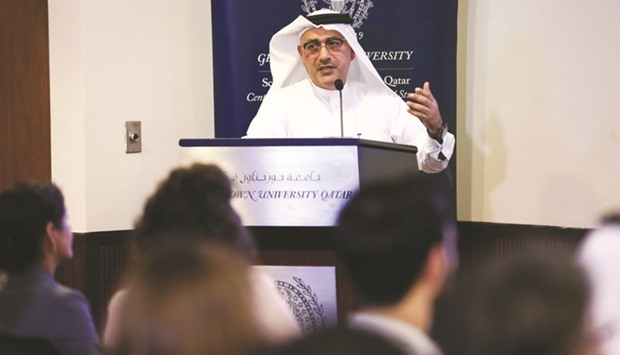The current architectural trend in Qatar is to retain elements of traditional design while creating more functional and environmentally-aware structures.
The observation was made by the award-winning Qatari architect Ibrahim Mohamed Jaidah at a recent event at Georgetown University in Qatar’s Centre for International and Regional Studies (CIRS).
Jaidah, group CEO and chief architect of the Arab Engineering Bureau and responsible for helping to shape the country’s skyline, gave an overview of the transitions that have occurred in the field.
He focused on the history and influences of Qatari architecture in his talk.
From the pre-oil period to up-and-coming future developments, he explained how simple mud houses were replaced by modern designs as architecture became a commodity in the 1990s.
The event, which was attended by scholars, invited guests and the wider community in Qatar, formed part of CIRS’ monthly dialogues series.
“I cannot think of a better way to start our monthly dialogues for the year than with such a distinguished speaker whose projects reflect the rich historical, cultural and environmental context we see around us,” said CIRS director Dr Mehran Kamrava.
A researcher and author of the History of Qatari Architecture and 99 Domes, Jaidah is a pioneer of a new architectural movement, creating memorable landmark structures that are helping to shape the developing nation.
His work includes the Kempinski Marsa Malaz and the Kempinski Residences and Suites, which, at 62 floors, is the tallest standing building in Qatar.
Other projects range from the Sharq Village and Spa to Barzan Tower and the sprawling new Ministry of Interior building.
A dedicated advocate for sustainability, Jaidah is also a co-founding member of the Qatar Green Building Council.
His efforts have been honoured with numerous awards, including the Islamic Cities Award, the Arab Town Organisation Awards, and the State of Qatar Encouragement Award.

Qatari architect Ibrahim Jaidah speaking at the event.


